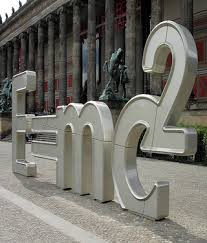David Aremu NEA
Wednesday, October 16, 2019
The audience which i am trying to attract is a niche audience with it mainly affecting children in primary school (year 5 to year 6) science enthusiasts. the sector which i am trying to come across to explores or aspires of science. this is shown by my model being in a mid shot camera view show off the science equipment.also the fact that i have big white bold handwriting making clear and very attracting to a kid's mind.
Tuesday, July 23, 2019
Tuesday, April 30, 2019
planing writing of the double pages
The world of science is fun and full of interesting equation. For example E=MC2 (Energy = mass x time) an equation which helps to find the heat of the sun this is helpful. But back to the main subject PHYSICS!!! how fun with its many equations and its interesting ways of showing science through endless possibility. First the experiment will be measuring Newton how fun.
EQUIPMENT:
1.Newton meter
2. 10g weights
3. clamp stand
EQUIPMENT:
1.Newton meter
2. 10g weights
3. clamp stand
a Hold the newton meter vertically. There is no force pulling its spring (apart from the weight of the hook), so the reading must be zero. Make a mark on the blank strip that will be the 0 of your newton meter scale.
b Pull on the spring with a force of 1 newton. On Earth, the weight of a 100-gramme mass is approximately 1 newton. So if you hang a 100-gramme mass from the newton meter, the Earth will pull it down with a force of about 1 newton. That is the force that stretches the spring. Make a mark on the blank strip that will be the 1 of the scale.
c Hang another mass from the newton meter. The force pulling the spring of the newton meter is now approximately 2 newtons. Make a 2 newton mark on your newton meter scale.
d Repeat this up to 10 newtons. You have now ‘calibrated’ your newton meter so that it has a scale for taking measurements.
e Take the masses off the newton meter and hang the unknown mass from it. Record the force of gravity (weight) that acts on this mass. You can now use your newton meter to measure any force, up to 10 newtons.
c Hang another mass from the newton meter. The force pulling the spring of the newton meter is now approximately 2 newtons. Make a 2 newton mark on your newton meter scale.
d Repeat this up to 10 newtons. You have now ‘calibrated’ your newton meter so that it has a scale for taking measurements.
e Take the masses off the newton meter and hang the unknown mass from it. Record the force of gravity (weight) that acts on this mass. You can now use your newton meter to measure any force, up to 10 newtons.
Tuesday, April 23, 2019
Wednesday, April 3, 2019
Wednesday, 3 April 2019
NEA Part 7 - Locations
The purpose of this task is for you to assess and identify the locations you're going to use for your photography/video.
TASK 2 - Write a short introduction about what this post is all about...use the small sentence above to get you started.
i will pick a location of where my photos will be.
TASK 3 - Produce images for each of the locations you intend to use and place them in the blog.
You need to include the following information about them:
-------------------------------------------
TASK 2 - Write a short introduction about what this post is all about...use the small sentence above to get you started.
i will pick a location of where my photos will be.
-----------------------------------------
TASK 3 - Produce images for each of the locations you intend to use and place them in the blog.
You need to include the following information about them:
- Address.
- What makes this location suitable?
- What risks/hazards does the location have that could potentially make your work difficult?
PRESENTATION IDEAS
You can use any software you like... you could use a table in Word or PPT or you can use more advanced digital technology such as Padlet, Flash cards (quizlet or Goconqr) and/or Popplet.
NOTE:
YOU MUST COMPILE THIS INFORMATION FOR EVERY LOCATION YOU INTEND TO USE.
----------------------
TASK 4 - Write a conclusion that highlights what you've learnt during this task and how you're going to use this knowledge in your own production.
Tuesday, April 2, 2019
my mood board
In this task i will be creating a mood board



TASK 5 - When you finish the mood boards you need analyse them answering the following questions:
- How did they helped you define content for your product?
- by show the subject of science i am doing which is physics
- What will be your overall colour scheme of your production?
- What kind of images/shots would you use in your production?
- What kind of fonts would you use in your production?
- What kind of mise-en-scene would you use in your production?
- What kind of intertextuality would you use in your production?
- Which media theory(ies) are you likely to use in your production?
Subscribe to:
Comments (Atom)



